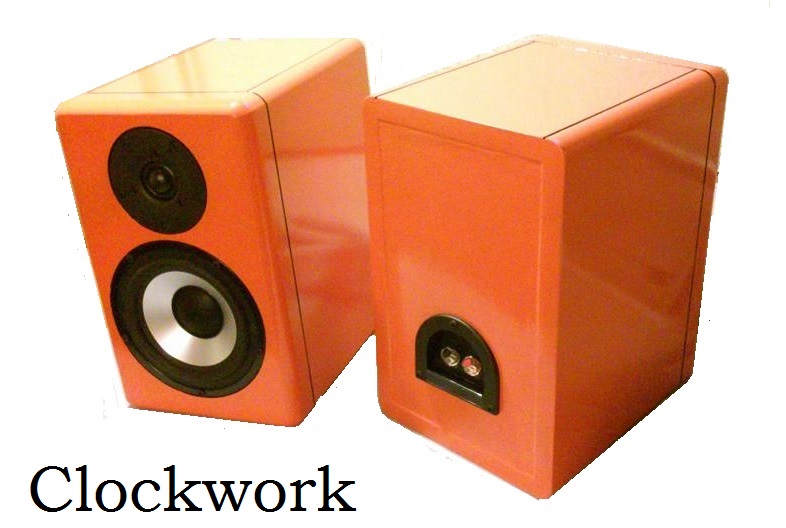
Clockwork
Designer:
Chris N
Project Category:
Bookshelf Speakers
Project Level:
Beginner
Project Time:
1-8 Hours
Project Cost:
100 – $500
Project Description:
A simple, straightforward , 2 way speaker suitable for a bookshelf or on stands.
Design Goals:
Good performance that can be placed in different locations, without a large price tag.
Driver Selection:
Dayton DA175 295-335
Peerless/Vifa DX25 264-1020
I chose the DA175 because I’ve used them before, I like the way they sound and perform, and they have held up very well. I hadn’t used the Vifa DX25 previously, and wanted to see how well it got along with the Dayton woofer.
Enclosure Design:
The cabinet is .75″ MDF, 8.5″ wide, 13.5″ tall, and 10.75″ deep. The enclosure is sealed, and roughly .42 cubic feet. The baffle is double thickness, two layers of .75″ MDF laminated together. The drivers are flush mounted, and the rear of the woofer cutout has a 45 degree bevel for breathing room. The sides of the cabinet are tied together with a brace, also made from MDF.
Enclosure Assembly:
The cabinet was assembled using Titebond wood glue and many clamps. The edges were trimmed with a flush cutting router bit. The same router bit has a slight, V shaped protrusion that cuts a groove, which I used to cut along the joint where the MDF joined. Usually those areas will, over time, expand and contract differently, leaving a slight mismatch. Since the plan was to paint these a glossy color, I did not want to have the seams show through. I painted the cabinets with orange Rustoleum, and while the small grooves I cut are black, an homage to a brand of musical instrument amplifiers and cabinets.
Crossover Design:
The crossover is an asymmetrical Linkwitz/Riley 4th order at about 1700hz, with an L-pad on the tweeter. The drivers are connected with the same polarity. I aimed for a fairly flat response in the room I listen to them in, but the tweeter level can be adjusted by increasing or decreasing the value of either resistor to taste, or to accommodate difference in rooms.
Tips & Tricks:
Use black paint or a Sharpie to black out the driver recess. The same marker works well for highlighting the groove cut on the outside of the cabinets.
Conclusion:
enjoy the sound these speakers produce. The DA175 has good bass from a relatively small, sealed, enclosure. The DX25 doesn’t draw attention to itself, it blends nicely with the woofer.
About the Designer:
My name is Chris and I’m addicted to building and listening to speakers.
Parts Used:

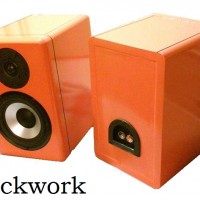
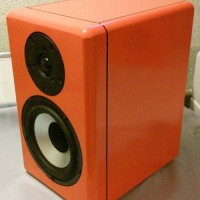
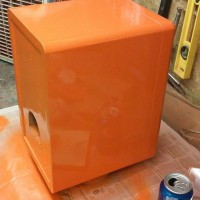
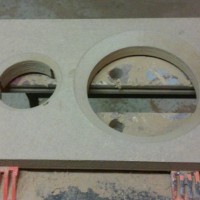
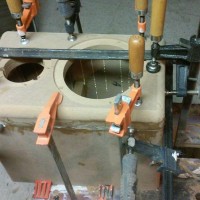
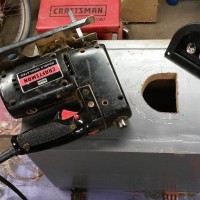
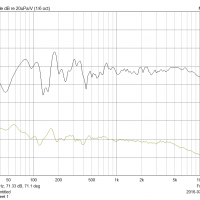
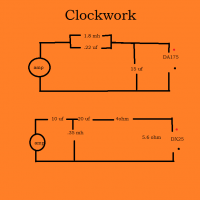
Very impressive craftsmanship and detail. Kudos for sealed cabinets.
I like the “Orange” cabinets, especially the v-grooving and black striping…..
great idea. I’m sure these sound excellent.
Thanks. This driver works well sealed, especially in this size cabinet.
Thanks for posting this! I was looking for a very simple design to use as my first crack at speaker building, and think I will use the components you suggest… I’m wondering if you could post a picture of your finished crossovers? Or just send them to me at scottsunn at gmail. Thanks!
My main question, without looking at a pic, is where the 5.6 ohm resister sits in the design, its hard to tell via the diagram…
Scott: The 5.6 ohm resistor goes across the tweeter terminals, I just goofed on the diagram 🙁 I don’t have any pictures of the completed crossovers, They were just zip tied to pieces of scrap wood, then screwed into the bottom of the inside of the enclosure.